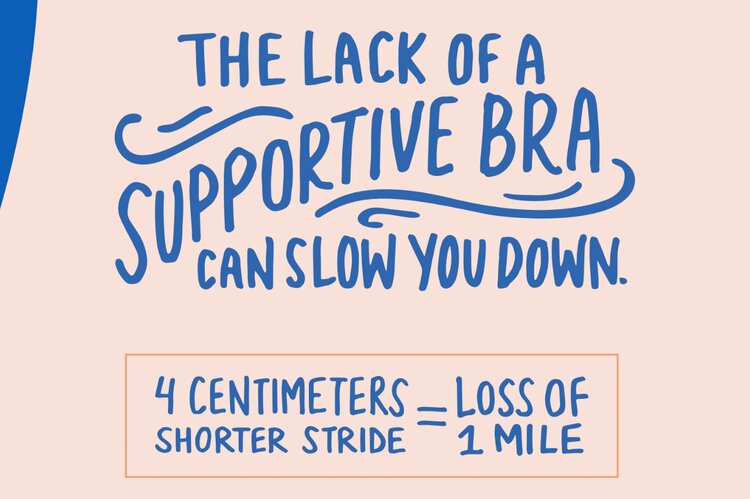Recently, I went down to the Running Works in the city to learn more about the tech behind the Brooks sports bras for running. There, I discovered that there are two common types of sports bras – encapsulated and compression. And Brooks has a range within each; Dare, which is encapsulated and Drive, which uses compression to keep breasts comfortably contained. There was so much I realised I didn’t know about sports bras, that I asked their team if they could put together a little Sports Bra 101 based on some of the most common questions we all had, and here it is!

What’s the actual function of a sports bra? Why should women wear them when they can be uncomfortable?
The function of a sports bra is to control and reduce breast movement to prevent injury and discomfort. A sports bra should be comfortable! Discomfort can be caused from both too little AND too much support – the latter can feel like running in a straight jacket!
Why is it important to get one which actually fits properly?
A poorly fitting bra can not only cause discomfort during the run, it can also impact your performance and cause irreversible damage to the breast tissue. Breast tissue does not contain any muscle to help control excessive motion – this means the delicate tissue structures can become irreversibly stretched and damaged if not sufficiently supported. Uncontrolled breast movement can also lead to a 4cm reduction in stride length which equates to running an additional mile over the course of a marathon!

How can you tell if your sports bra fits properly?
There are 3 simple steps to ensure a good fit; 1) check the bottom band is secure – a good guide is being able to comfortably fit two fingers under the band, but not more! 2) check the cups – your breast tissue should completely fill the cups with no gaping at the edges. There should also be no spillage around the edges. A good tip is to scoop each breast into the centre of the cup with your hand before assessing fit. 3) last is the straps – again these need to be secure enough that you can’t fit comfortably more than two fingers underneath, but they shouldn’t uncomfortably dig in.
How often should you get a new sports bra? Are they like trainers where you should renew them after a certain mileage?
A good habit to get into is being re-fitted regularly (every 3-6 months) but it’s also important to be aware of how the bra should fit (see above) so that you can assess if the bra has become stretched out and could be retired to an everyday or yoga bra.
To prolong the life of your bra it’s important to look after it; ideally hand wash and line dry – definitely no tumble drying or wringing the bra out when wet! Avoid fabric conditioners as these can clog the material and reduce breathability. When storing, fold one cup inside the other to maintain the shape of the cup.
What kind of sports bra gives you the most support?
High support is not just linked to one aspect of the bra design, our Run Bras are a carefully crafted toolbox of features which work together to provide a sweet spot of support. Every Brooks Run Bra has been designed with high impact Run-Ready support in mind! This means that you can be confident you’re getting the right support for running as long as you’re choosing a bra from the relevant size range for you, and that fits well.
Do you need to wear a sports bra even if you’ve got small boobs?
Yes, absolutely! It’s a common misconception that smaller boobs don’t need support when running. At Brooks, we have different bras designed specifically for different boobs, dependant on the weight and volume of tissue there is to support. For smaller cup sizes, a high level of support can be achieved with a more minimal silhouette or slimmer straps that she is often looking for. The Dare Strappy Run Bra was designed with this insight in mind, so is perfect for the A and B customer!
Leave a Reply